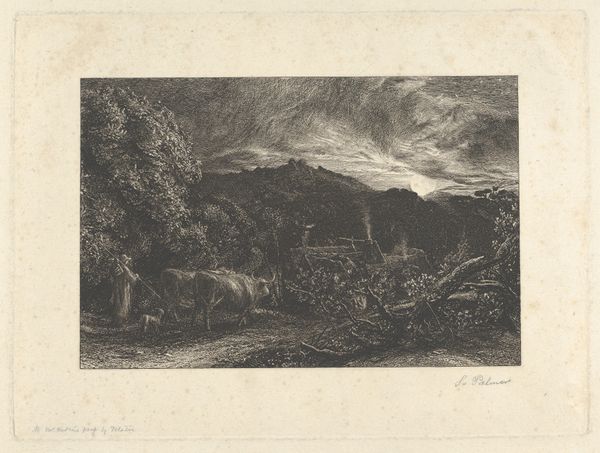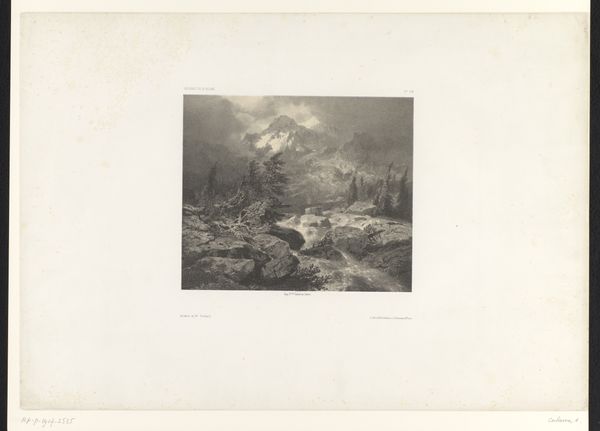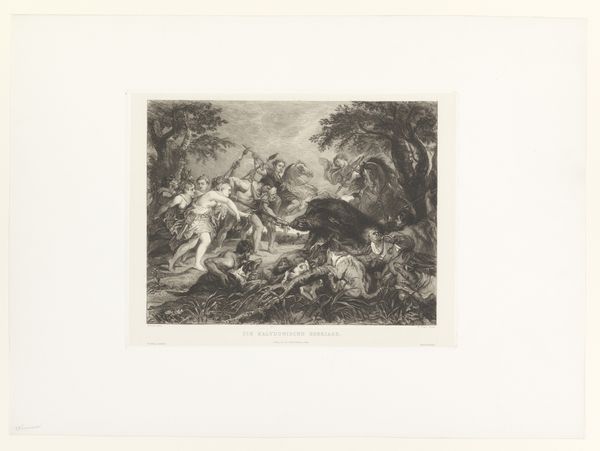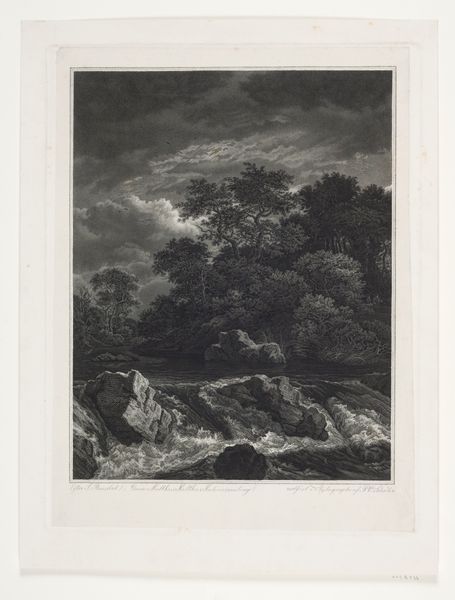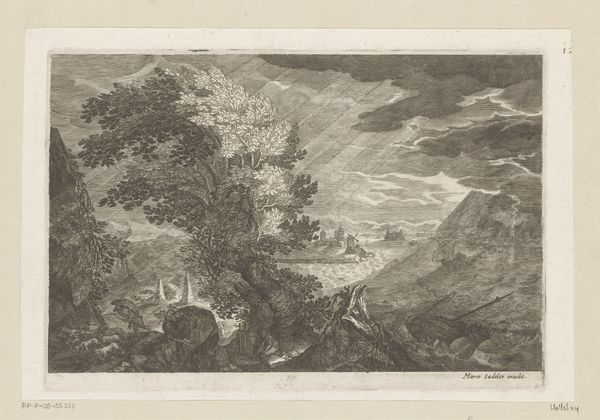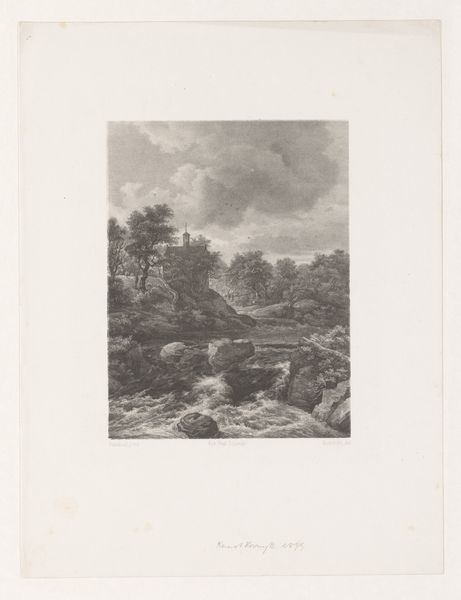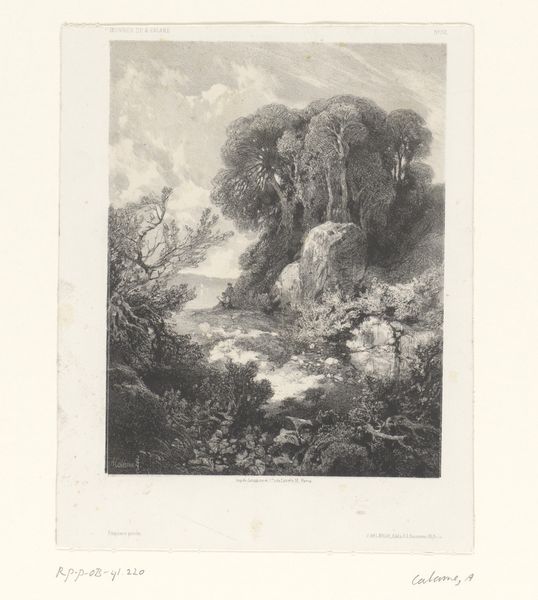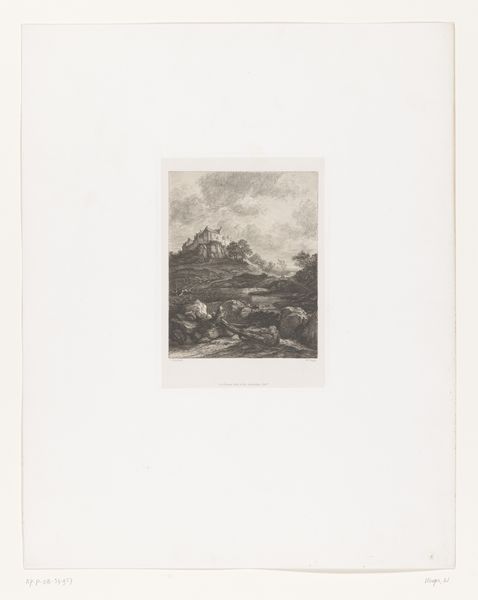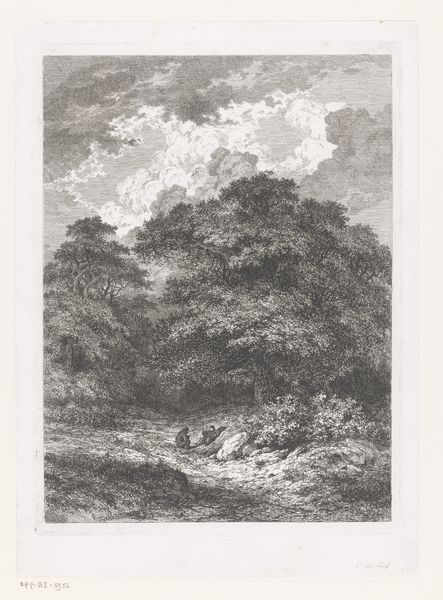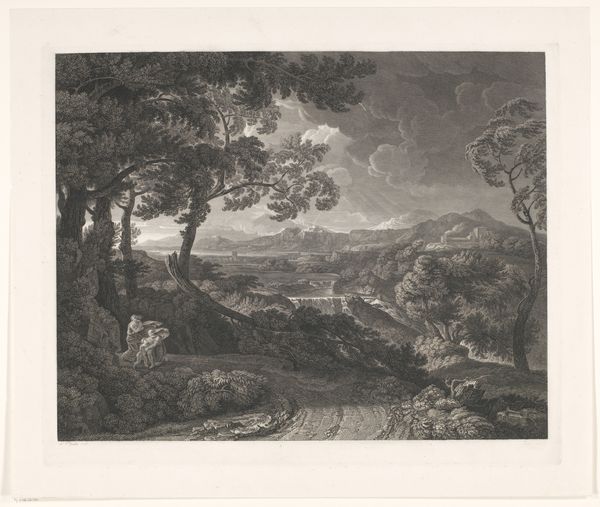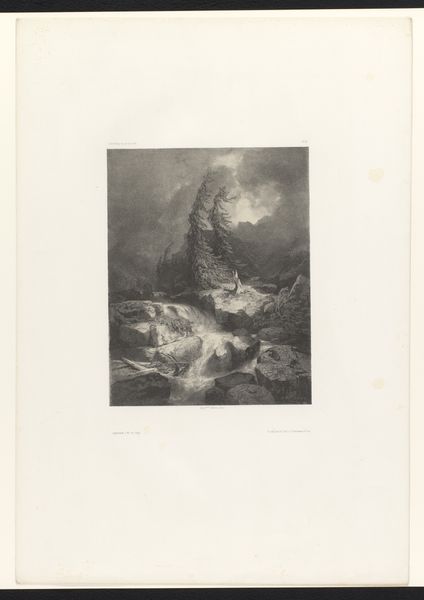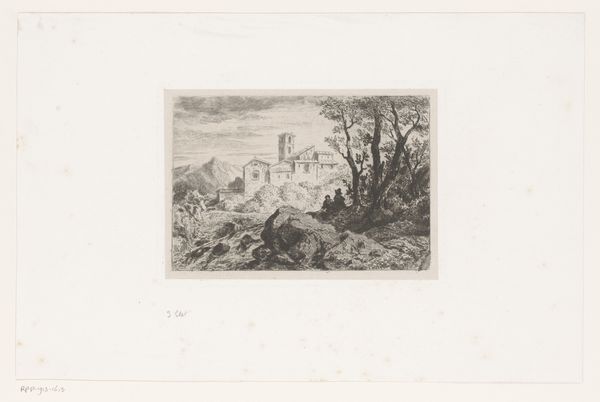
Dimensions: height 237 mm, width 178 mm
Copyright: Rijks Museum: Open Domain
William Unger created this landscape with a waterfall as an etching. The image creates meaning through visual codes, cultural references, and historical associations with the landscape. Looking at the social conditions that shape artistic production, one can see the rise of landscape painting as intertwined with broader cultural shifts. In Unger's time, there was a growing appreciation for the natural world, fueled by Romantic ideals and the rise of leisure travel. Landscape art often carries ideological weight. Unger's waterfall might be read as a celebration of nature's power, or perhaps as a commentary on industrialization. Was he critiquing the art institutions? The rise of public museums provided new spaces for exhibiting and viewing art, shaping tastes and promoting certain artistic styles. The meaning of Unger's etching is contingent on its social and institutional context. It’s essential to consider the cultural values and historical forces that shaped both its creation and reception.
Comments
No comments
Be the first to comment and join the conversation on the ultimate creative platform.
